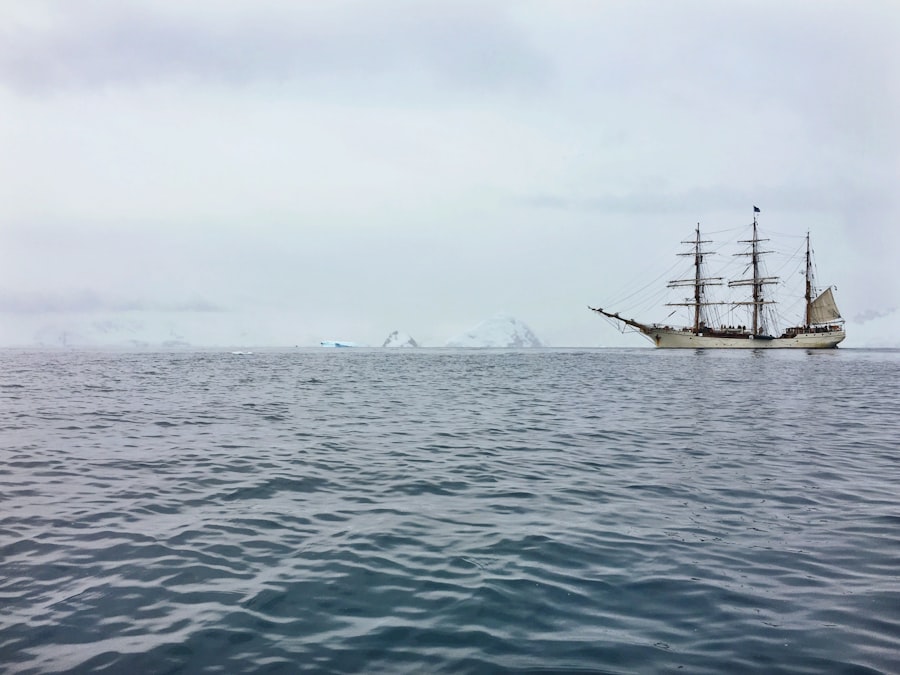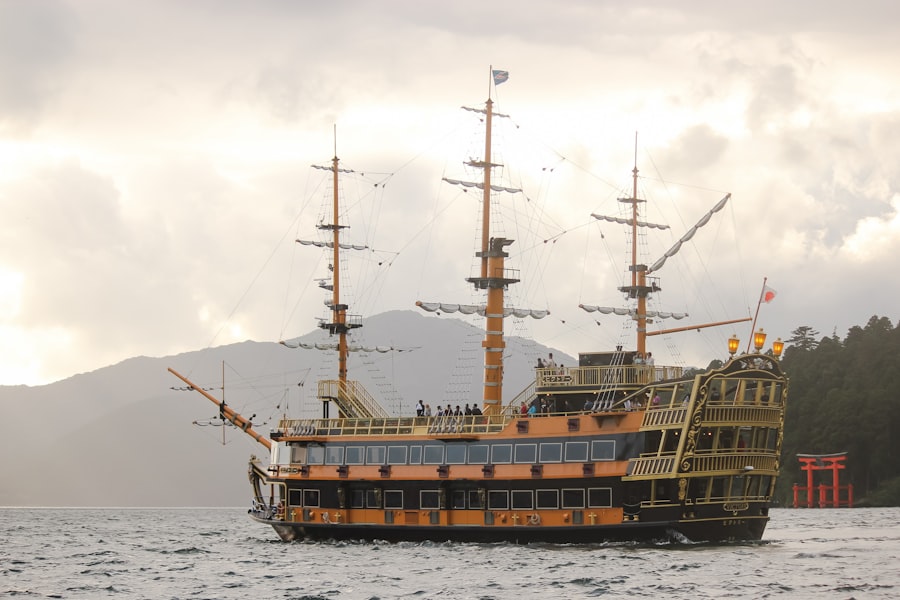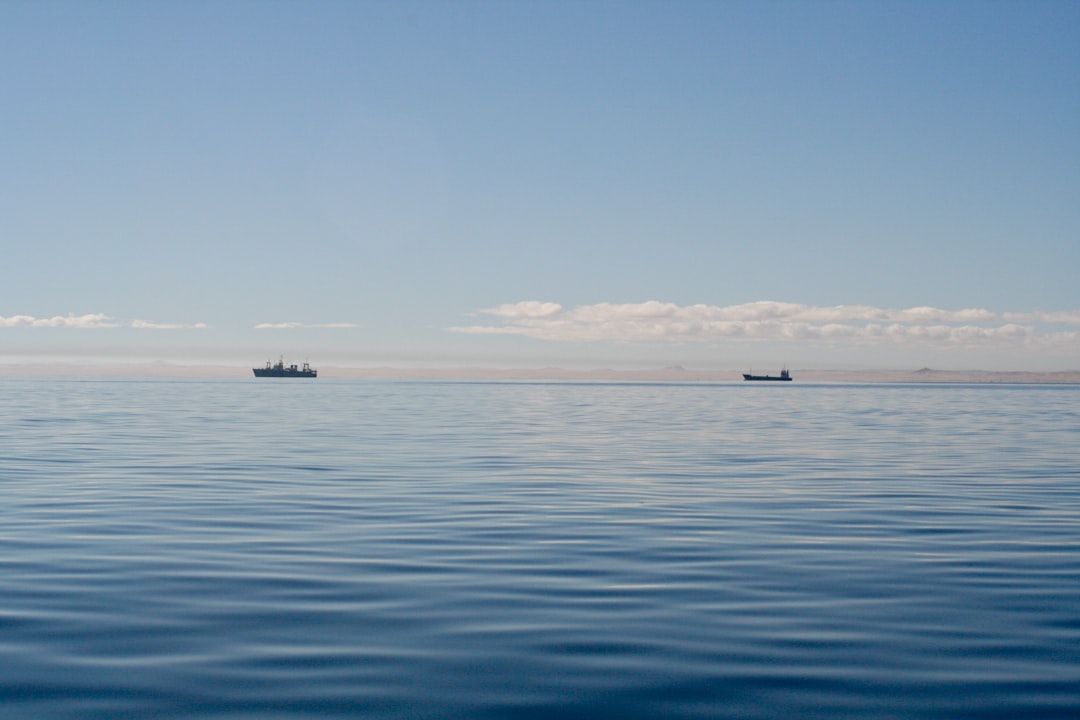The Drake Passage, a body of water situated between the southern tip of South America and Antarctica, is renowned for its tumultuous seas and unpredictable weather. This narrow stretch of ocean, measuring approximately 800 kilometers (500 miles) wide, serves as a critical conduit for maritime traffic between the Atlantic and Pacific Oceans. Its strategic location not only makes it a vital route for shipping and research vessels but also a significant area for scientific exploration and environmental studies.
The passage is named after the English explorer Sir Francis Drake, who was the first to navigate these waters in the late 16th century, although it has been traversed by indigenous peoples long before his time. The Drake Passage is often characterized by its fierce winds and towering waves, which can reach heights of over 30 feet. This reputation for rough seas has earned it the moniker “the most dangerous body of water in the world.” Despite its challenges, the passage is a gateway to the pristine landscapes of Antarctica, drawing adventurers, researchers, and tourists alike.
The allure of the Southern Ocean, with its unique ecosystems and breathtaking vistas, continues to captivate those who dare to cross its waters.
Key Takeaways
- The Drake Passage is a treacherous body of water located between South America’s Cape Horn and the South Shetland Islands of Antarctica.
- The Drake Passage has a rich historical significance as it was first navigated by Sir Francis Drake in 1578, and has since been a key route for explorers and expeditions to reach Antarctica.
- Navigating the Southern Ocean presents numerous challenges including extreme weather conditions, strong winds, and unpredictable seas, making it one of the most difficult maritime routes in the world.
- Modern technology and specialized equipment such as ice-strengthened vessels and advanced navigation systems are essential for safely navigating the Drake Passage.
- The weather patterns in the Southern Ocean can have a significant impact on ships, with strong winds, high waves, and icebergs posing serious risks to navigation.
Historical significance of the Drake Passage
The historical significance of the Drake Passage cannot be overstated. It has played a pivotal role in maritime exploration and trade since the Age of Discovery. Sir Francis Drake’s circumnavigation of the globe in the late 1500s marked a turning point in navigation and exploration.
His journey through these treacherous waters not only demonstrated the potential for global maritime routes but also highlighted the challenges posed by the unpredictable nature of the Southern Ocean. The passage became a symbol of human resilience and ingenuity in the face of nature’s formidable forces. In addition to its role in exploration, the Drake Passage has been a crucial route for whaling and fishing industries over the centuries.
The rich marine life found in these waters attracted whalers during the 19th century, leading to significant ecological changes that are still being studied today. The passage has also served as a vital link for scientific expeditions aimed at understanding climate change and its impact on polar regions. As such, it stands as a testament to humanity’s ongoing quest for knowledge and understanding of our planet’s most remote areas.
Challenges of navigating the Southern Ocean

Navigating the Southern Ocean presents numerous challenges that test even the most seasoned mariners. The unpredictable weather patterns, characterized by sudden storms and high winds, can create perilous conditions for vessels attempting to traverse the Drake Passage. The convergence of cold Antarctic waters with warmer currents from the north results in turbulent seas that can change rapidly, often without warning.
This unpredictability requires navigators to remain vigilant and adaptable, as conditions can shift from calm to chaotic in a matter of minutes. Moreover, the geography of the Drake Passage itself poses additional challenges. The presence of underwater ridges and shifting currents can create hazardous navigation conditions, making it essential for captains to possess an intimate knowledge of the area.
The risk of icebergs and sea ice further complicates navigation, particularly during certain times of the year when these hazards are more prevalent. As a result, successful navigation through this region demands not only skill but also a deep understanding of both meteorological and oceanographic factors.
Technology and equipment used to conquer the Drake Passage
| Technology/Equipment | Description |
|---|---|
| Ice-strengthened vessels | Ships designed to withstand icy conditions |
| Satellite communication | Allows for real-time communication and navigation |
| GPS navigation | Precise navigation system for accurate positioning |
| Ice radar | Detects and maps ice formations for safe passage |
| Weather monitoring equipment | Provides real-time weather updates for safe navigation |
Advancements in technology have significantly improved the ability to navigate the Drake Passage safely and efficiently. Modern vessels are equipped with sophisticated navigation systems that utilize GPS technology, radar, and sonar to provide real-time data on weather conditions and underwater topography. These tools allow captains to make informed decisions about their routes and adjust their course as necessary to avoid dangerous conditions.
In addition to navigation technology, modern ships are designed with enhanced stability features that help them withstand rough seas. Hull designs that minimize drag and improve buoyancy contribute to safer passage through turbulent waters. Furthermore, communication systems have evolved to ensure that vessels can stay in contact with shore-based support teams and other ships in the area, providing an additional layer of safety.
These technological advancements have transformed the way mariners approach the challenges of crossing the Drake Passage, making it more accessible than ever before.
Weather patterns and their impact on ships in the Southern Ocean
The weather patterns in the Southern Ocean are notoriously volatile, influenced by a complex interplay of atmospheric conditions and ocean currents. The region is known for its fierce storms, which can develop rapidly due to the clash between cold polar air masses and warmer air from lower latitudes. These storms can produce high winds, heavy precipitation, and towering waves that pose significant risks to vessels navigating through the Drake Passage.
Understanding these weather patterns is crucial for safe navigation. Mariners must be adept at interpreting weather forecasts and recognizing signs of impending storms. The ability to anticipate changes in weather can mean the difference between a safe passage and a perilous situation at sea.
Additionally, seasonal variations play a role in weather conditions; summer months may offer relatively calmer seas compared to winter when storms are more frequent. As such, careful planning and preparation are essential for any voyage through this challenging region.
Safety measures and precautions for navigating the Drake Passage

Given the inherent dangers associated with navigating the Drake Passage, implementing robust safety measures is paramount for all vessels operating in these waters. One of the primary precautions involves thorough pre-voyage planning, which includes assessing weather forecasts, sea conditions, and potential hazards along the route. Captains often conduct risk assessments to identify possible challenges and develop contingency plans should unexpected situations arise.
Onboard safety protocols are equally important. Crews are trained in emergency procedures, including man-overboard drills, fire safety measures, and evacuation protocols. Life-saving equipment such as life rafts, personal flotation devices, and emergency beacons are standard on vessels traversing these waters.
Additionally, maintaining open lines of communication with other ships and shore-based support teams enhances safety by ensuring that assistance can be summoned quickly if needed. These comprehensive safety measures contribute significantly to reducing risks associated with navigating one of the world’s most treacherous maritime routes.
Wildlife and natural beauty of the Southern Ocean
The Southern Ocean is not only known for its challenging navigation but also for its stunning natural beauty and rich biodiversity. This remote region is home to an array of wildlife that thrives in its cold waters, including seals, penguins, whales, and various seabird species. The sight of a pod of orcas breaching or a colony of emperor penguins waddling across ice floes adds an element of wonder to any journey through the Drake Passage.
The pristine landscapes surrounding the Southern Ocean further enhance its allure. Towering glaciers, rugged coastlines, and dramatic ice formations create breathtaking vistas that captivate travelers and explorers alike. The stark contrast between icy expanses and vibrant marine life serves as a reminder of nature’s resilience and beauty in even the harshest environments.
For those fortunate enough to navigate these waters, encounters with wildlife and awe-inspiring scenery provide unforgettable experiences that highlight the importance of preserving this unique ecosystem.
Famous expeditions and explorations through the Drake Passage
Throughout history, numerous expeditions have ventured through the Drake Passage, each contributing to our understanding of this remote region. One notable expedition was led by Ernest Shackleton during his ill-fated attempt to cross Antarctica in 1914. Shackleton’s journey through these treacherous waters became legendary not only for its challenges but also for his remarkable leadership during adversity.
The story of his crew’s survival against all odds continues to inspire adventurers today. Another significant exploration was conducted by oceanographer Jacques Cousteau, who brought attention to the ecological importance of the Southern Ocean through his documentaries in the mid-20th century. Cousteau’s work highlighted both the beauty and fragility of marine ecosystems in this region, paving the way for increased conservation efforts.
These expeditions have not only advanced scientific knowledge but have also fostered a greater appreciation for the Drake Passage as a vital part of our planet’s maritime heritage.
The role of experienced captains and crew in navigating the treacherous waters
The successful navigation of the Drake Passage relies heavily on the expertise of experienced captains and their crews. These individuals possess a wealth of knowledge gained from years spent at sea, allowing them to make critical decisions under pressure. Their ability to read weather patterns, understand ocean currents, and anticipate potential hazards is invaluable when traversing such unpredictable waters.
Moreover, teamwork among crew members plays a crucial role in ensuring safe passage through challenging conditions. Effective communication and collaboration are essential during maneuvers that require quick adjustments or emergency responses. Experienced crews are trained to work cohesively under stress, fostering an environment where safety is prioritized above all else.
The combination of skilled leadership and dedicated teamwork is what ultimately enables vessels to conquer the formidable challenges presented by the Drake Passage.
Tips for travelers and adventurers crossing the Drake Passage
For travelers embarking on an adventure across the Drake Passage, preparation is key to ensuring a safe and enjoyable experience. First and foremost, individuals should choose reputable tour operators with experience navigating these waters. Researching reviews and testimonials can provide valuable insights into an operator’s safety record and commitment to passenger well-being.
Packing appropriately is also essential; travelers should bring layers of clothing suitable for varying weather conditions, as temperatures can fluctuate dramatically throughout a single day. Additionally, seasickness medication may be advisable due to potential rough seas during transit. Staying informed about safety protocols onboard will further enhance travelers’ confidence as they embark on this remarkable journey through one of nature’s most awe-inspiring landscapes.
Future developments in conquering the Southern Ocean
As technology continues to advance, future developments in navigating the Southern Ocean hold great promise for enhancing safety and efficiency in traversing the Drake Passage. Innovations in ship design may lead to vessels that are even better equipped to handle rough seas while minimizing environmental impact. Research into alternative fuels could also contribute to more sustainable maritime practices in this ecologically sensitive region.
Furthermore, ongoing scientific research will likely yield new insights into weather patterns and oceanographic conditions within the Southern Ocean. Improved forecasting models could enable mariners to make more informed decisions about their routes while enhancing overall safety during voyages through these challenging waters. As humanity’s understanding of this remote region deepens, it is hoped that future explorers will continue to honor its beauty while navigating its complexities with respect and care.
In conclusion, navigating the Drake Passage remains one of maritime history’s most formidable challenges yet offers unparalleled opportunities for exploration and discovery. With its rich history, diverse wildlife, and breathtaking landscapes, this body of water continues to inspire adventurers from around the globe while reminding them of nature’s power and beauty.
The Drake Passage is a crucial maritime route that connects the Atlantic and Pacific Oceans, often used by ships navigating between the southern tips of South America and Antarctica. This passage is known for its challenging weather conditions and turbulent waters, making it a significant route for scientific expeditions and adventurous cruises. For more detailed insights into the navigational challenges and historical significance of the Drake Passage, you can explore a related article on the topic by visiting this page. This resource provides an in-depth look at the passage’s role in global shipping and exploration.
WATCH NOW! Drake Passage: Earth’s Deadliest Waters Revealed
FAQs
What is the Drake Passage?
The Drake Passage is the body of water between the southern tip of South America and the northern tip of the Antarctic Peninsula. It is known for its rough seas and strong winds.
Do ships use the Drake Passage?
Yes, ships do use the Drake Passage as a route for travel between the Atlantic and Pacific Oceans, as well as for accessing the Antarctic region.
Are there challenges associated with navigating the Drake Passage?
Yes, the Drake Passage is known for its rough seas and strong winds, which can create challenging conditions for ships navigating through the area.
What types of ships use the Drake Passage?
A variety of ships use the Drake Passage, including research vessels, expedition cruise ships, and cargo vessels. These ships may be specially equipped to handle the challenging conditions of the passage.
Are there any safety concerns for ships using the Drake Passage?
Due to the rough seas and strong winds, there are safety concerns for ships using the Drake Passage. However, with proper preparation and navigation, ships can safely traverse the area.
